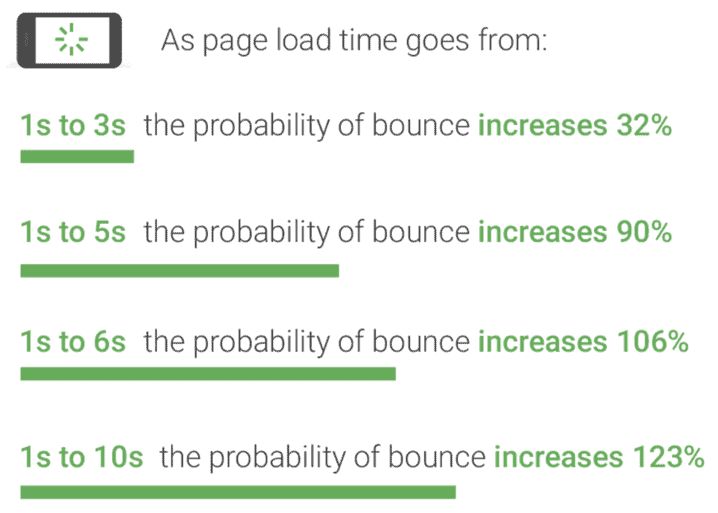Every website has a different geographic user profile.
Some sites are much more localized and focus on reaching customers within a 20-mile radius of their business.
Other sites are intentionally designed to deliver content to users all over the world.
Multilingual new sites, affiliate sites and site directories are just a few examples of websites that reach a global audience.
The logistics of delivering content to a geographically diverse base of website visitors is very different from running a website for a local business.
It can be difficult to provide a pleasant user experience for all of your visitors when your servers are located in one or two regions.
Visitors that are located a long distance from those servers will not be able to access content as quickly and seamlessly.
Content delivery networks are the solution to this problem.
They consistently provide a great user experience to every user by reducing speed and allowing you to customize the content that you display to them.
What are content delivery networks?
Content delivery networks are strategically connected web servers that are uniformly distributed around the world.
CDNs from a provider like Incapsula are designed to make sure that every website visitor is connected with the closest server, so they will receive content as quickly as possible.
The closest server responds to the request.
However, servers throughout the network copy pages and propagate the requested content to every server after an HTTP connection is made.
The entire CDN also communicates with the requesting server to sure content that has not been cached before is cached properly.
The CDN can also be programmed to display custom versions of the content for users in different regions.
The end results of all of this, is a fast loading website — which can result in improved search results, user experience, conversions and sales.
The process is completed very efficiently and ensures that all users get access to content as quickly as possible.
Despite the sophisticated content delivery process that takes place behind the scenes, the user is usually unaware of the existence of the CDN.
Unless the CDN provides a unique URL structure after content has been delivered, the entire process is invisible to them.
What are the core benefits of using a CDN?

CDNs are becoming more widely used as website owners try to optimize their content for an increasingly global audience.
If you are still skeptical that a CDN will bolster the performance of your website, then you should review these benefits.
Improving engagement statistics and returning visitor rates by reducing load times.
Slow website load times can have a terrible impact on your engagement metrics.
An estimated 53% of website visitors will leave if your site takes more than three seconds to load.
Those visitors will probably never return to your site.
Even if they don’t leave your site before the first page of content they are trying to access loads, they probably won’t stick around very long if every webpage load slowly.
Using a CDN will significantly improve these metrics.
Your bounce rate will be much lower and time on site will increase.
Create custom content for each region
Using a CDN doesn’t just help improve the load time if your website.
It also allows you to customize the content for your visitors.
You can set a number of conditionals to specify the content that users in each region will see.
When they make a caching request to the server, the CDN will use the rules you set to determine which version of content to present to them.
You can use these rules to make sure that content is presented in the most common language for readers in that region.
You can also choose images, color schemes, fonts and other visual elements that best appeal to people in that area.
Improving your SEO rankings
CDNs appear to have a positive impact on SEO rankings.
There are a number of reasons for this:
- Search engine crawlers index content more easily if it has a fast load time.
- Without a CDN, your website server would be under much higher strain during peak traffic periods.
- Your visual content will be compressed, so it does not require as much bandwidth during the caching process.
- You can target a wider range of higher volume search terms in different regions, so that you can scale traffic.
- You minimize the number of open connections to your website server.
- The content will be translated into the most common language of the user’s location, which means that it will be naturally optimized for different keywords in different tongues.
- You reduce the risk of your site being taken off-line by a DDoS attack, which would obviously make it impossible for bots to crawl your site.
Using a CDN will dramatically improve the performance of your site.
Since most of these metrics are strongly correlated with your organic search engine rankings, it will likely improve your SEO as well.
If you are skeptical, you might want to try using a tool like PingDom from various IP addresses in other regions.
This will give you an idea of how quickly your site is loading.
If you see slow times in many of the areas where you are drawing website visitors, then you will probably significantly improve your search rankings by using a CDN.
You improve the ROI of global paid marketing campaigns
Many bloggers use paid traffic to scale.
They might depend on it to sell informational products they created from their blog content, build their email list or attract long-term readers.
If you are running paid traffic campaigns to reach people in different parts of the world, then you need to make sure that your website is carefully optimized for them.
This is even more true than it would be if you were trying to reach them with organic traffic.
You can burn through a lot of money if your site isn’t optimized properly for them.
Since using a CDN will increase the speed of your site and allow you to create custom content for your visitors, you will be able to optimize your landing pages for them much better.
This will dramatically increase the ROI of any paid traffic campaigns you are running.
CDNs Are Essential for Running a Global Blog
Running a global blog is challenging. You need to make sure that your site is properly optimized for users in various parts of the world.
CDNs have proven to be remarkably effective at optimizing your content for your global readers, so it is a good idea to install one if you have a geographically heterogeneous user profile.






